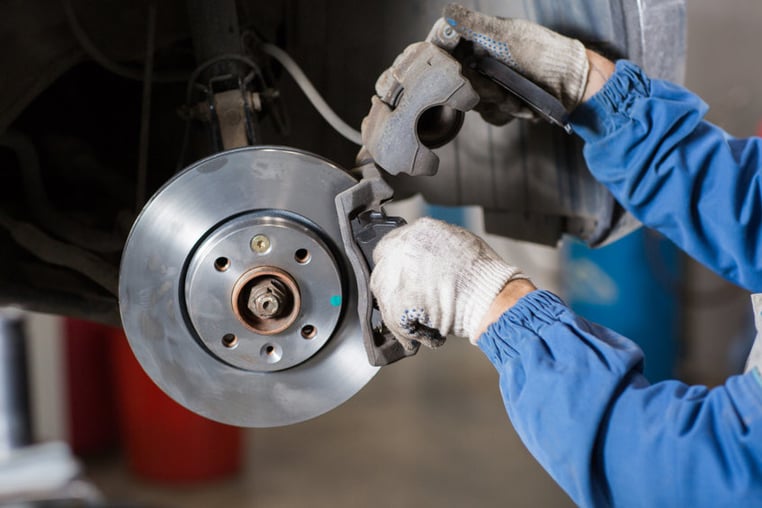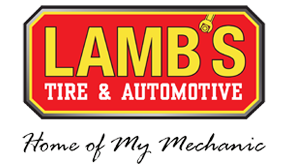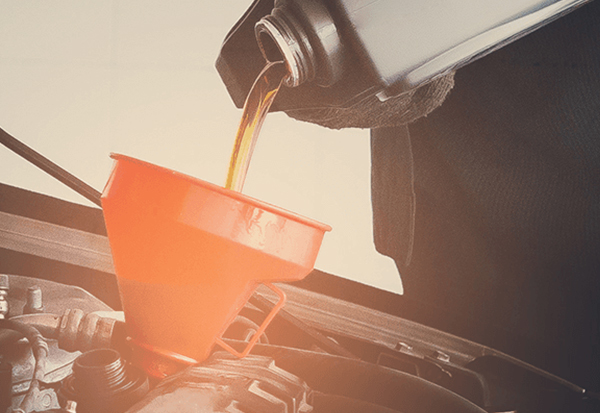Brake Repair Guide: Everything You Need to Know About Your Car’s Brakes

Your brakes are one of the most important safety systems on your vehicle. Of course, when you press your foot on the brake pedal, you expect it to bring your vehicle to a complete stop. But you may not know exactly how all of the components within your brake system work together almost instantaneously to make this happen.
To be able to properly maintain this critical system and know when brake repair service may be needed, it’s important to understand the ins and outs of your vehicle’s braking system. This will help you keep it in optimal working condition and ensure that you and your passengers will be safe on the road.
Components of Your Brake System
There are two types of brake systems - disc brakes and drum brakes. Many newer model vehicles have disc brakes on both the front and back, while some vehicles have disc brakes in the front and drum brakes in the rear. Both types involve a variety of different components, including:
Master Cylinder
This component pushes the hydraulic brake fluid from the fluid reservoir into the brake lines and manages the amount of hydraulic pressure that is placed on that fluid.
Brake Rotors (on Disc Brakes)
On each wheel, you’ll find a flat disc-shaped brake rotor that spins along with the wheels. To stop the vehicle, the brake pads are pressed onto this rotor creating the friction needed to slow the wheels.
Brake Drums (on Drum Brakes)
In a drum brake system, the brake drum is the alternative to a brake rotor. When the brake pedal is pressed, the brake shoe is pressed against the inside of the brake drum to slow the spinning of the drum and wheel.
Brake Pads (on Disc Brakes)
In a disc brake system, the brake pad is the component that is pressed against the brake rotor to generate the friction needed to bring a spinning wheel to a stop. Brake pads can be ceramic or metallic, both of which have a varying optimum heat range and longevity.
Brake Caliper (Disc Brakes)
Your brake calipers are what hold the brake pads and clamp them down onto the brake rotors using hydraulic pressure. As the brake fluid is pushed into one or more pistons within the brake caliper, these pistons push this force down onto the brake pads.
Brake Shoe (Drum Brakes)
In a drum brake system, the brake shoe is the alternative to the brake pad. This brake shoe is pressed against the interior of the brake drum to slow and stop the vehicle.
Brake Booster
Your vehicle’s brake booster amplifies the foot pressure you apply on the brake pedal by using the engine vacuum or a vacuum pump, making it easier to slow the vehicle quickly.
Brake Pedal
This may seem somewhat obvious, but your brake pedal is the critical component that is connected to the entire braking system and initiates the entire chain of events that take place to stop your vehicle.
Wheel Speed Sensors (ABS)
In vehicles with an anti-lock braking system (ABS), wheel speed sensors detect how fast the wheels are spinning and send this info to the ABS module, which helps control your vehicle’s stopping power.
ABS Module
The ABS module is your braking system’s computer. It uses input from the wheel speed sensors to determine how/when to apply or release the braking power from your wheels individually to safely bring the vehicle to a stop. The ABS module enables your ABS brake system to help you stop as fast and as controlled as possible.
Brake Lines
Brake lines transfer brake fluid between the master cylinder and wheels. This is the hydraulic fluid that transfers the hydraulic pressure and allows braking to be easier.
How It All Works Together
Amazingly, your brake system allows you to bring a 1.5 ton (or more) vehicle to a complete stop in very little time, simply by pressing on the brake pedal. When you initiate a stop, several things happen almost instantaneously to slow the vehicle.
As the brake pedal is pressed, it pushes a plunger against the master cylinder, which then releases the hydraulic brake fluid through the brake lines and into the brake calipers at each wheel. Next, the brake calipers squeeze the brake pads against the brake rotors. The friction material on the brake pads absorbs the heat and pressure of this energy exchange and safely slows/stops the spin of your rotors.
Each time you use your brakes, part of this friction material is worn away. This is why regular brake inspections and periodic brake pad replacement are crucial to keeping your braking system working properly.
Additional small parts and electronic components all work together to hold the system together and control it safely. Each and every component must be working properly for your brakes to work best.
Signs Your Brake Pads Are in Trouble
There are several signs to be aware of that indicate your brakes may not be working as they should. If you notice any of the red flag’s listed below, it’s time for brake repair:
Squealing Noises
If you start to hear a squealing noise when you are pressing the brake pedal, it may be coming from the built-in “wear indicator” on your brake pads. This safety feature is built-in to alert you when the pads are close to being overly worn and may need replacing.
Clicking Noises
When you are hearing a clicking or rattling noise, this often indicates that a brake caliper, which holds the brake pads, has become loose. This should be checked as soon as possible to prevent further costly damage.
Vehicle Pulling to One Side
Sometimes, your wheels receive different amounts of pressure to brake and the pads can wear unevenly. This may cause the vehicle to pull to one side, while trying to stop or slow down. Some other causes of pulling while braking include a stuck caliper or a collapsed brake hose.
Unusual Vibration in the Brake Pedal
Several different brake issues can cause vibration in the brakes. The most common cause is warped brake rotors. Extreme stress on your brakes over extended periods can generate excess friction and heat that causes rotors to warp.
Slower Braking
If it is taking longer than usual to effectively slow or stop your vehicle, this is a clear sign that you need brake service. As your brakes are used over time, their ability to generate the friction needed to stop the car quickly can diminish.
Don’t jeopardize your safety by ignoring signs of brake trouble. Bring your vehicle into your closest Lamb’s Tire & Automotive location as soon as possible.
Trust the Local Experts When You Need Brake Repair in Austin
If you are in search of one of the best local brake shops in Austin, you can rely on the experienced professionals here at Lamb’s Tire & Automotive. From resurfacing rotors to brake pad replacement and everything in between, our ASE-certified technicians can perform the services your vehicle may need.
Drivers throughout the Austin area trust our experts to meet their vehicle maintenance and repair needs and keep them on the road safely. With state-of-the-art equipment and top-quality parts, you’ll get high-quality and friendly service at a great value.
When you need professional brake repair and maintenance for your car, truck, or SUV, visit your closest Lamb’s Tire & Automotive location today! Schedule your appointment now.









